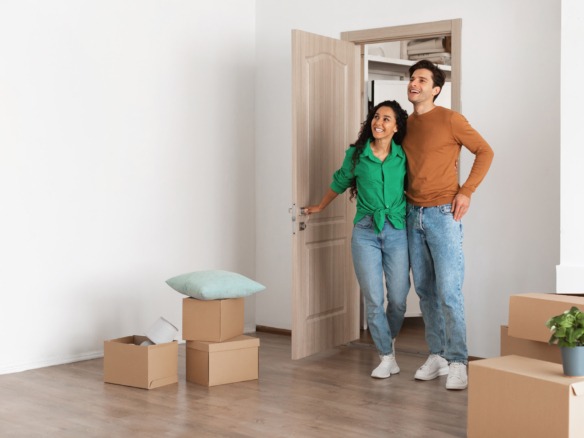When moving house, there are countless things to consider, from property photos to prospective buyers. While the process of marketing your property is arduous enough, though, another element of the process that people often overlook is what to do with the things inside it.
Fixtures and fittings are often mentioned in property adverts, but it is important to know the difference between them: fixtures are fixed attachments to a property, while fittings are removable.
“There is no law that outlines what should be left in or removed from the house once it has been sold,” notes Su Snaith, Head of Estate Agency for Harrison Murray. “Legally, the seller isn’t obliged to leave any fixtures or fittings – and some have been known to unscrew all the light bulbs and even dig up plants from the garden prior to their departure.”
“This may not be illegal, but would probably cause upset to the buyer if they were unaware!”
How do you decide what to leave behind? As a buyer, what do you expect the former owners to have left? With a potential minefield of conflict and decisions, we present eight hints to help sell your furniture when moving home.
Decide what you need
The first and most important step is the obvious one: work out what you need. After all, if you do not know what you need, you will not be able to pack up your belongings or move house at all. The easiest approach is to make a list and sort your fittings into what you want, what you need, what you don’t want and what you don’t need. From that, you divide lists into what to sell (things you no longer want) and what to keep in storage until a later date (things that you want but don’t need).
Measure up
When buying a home, one of the first questions you wonder is whether all your furniture will fit in the new property. Measuring your furniture (or other objects) and measuring your new home will help you decide what is too big to take with you. This will help you decide what to sell or leave behind within the property. For your buyers, measurements of rooms or included objects will also help them to plan their own move.
Check with friends and family… and your buyer
That chair you don’t like anymore? The coffee table that won’t fit in your lounge? Friends and family are always handy receivers of unwanted objects and, if you are hoping for some cash in exchange, are often more open to negotiation on prices. Always check with them first, before heading straight to the shops: it could save you time, headache and also money. If in doubt, remember that you can ask your buyer if they want a specific item.
Find out where you can sell
After checking with people you know, you must investigate the ways you can reach people you don’t. Auctions are often overlooked as a possible way to sell expensive or older items, while second-hand furniture shops are more common than you might think: in person, via the high street, you may be able to arrange consignment with a retailer until it is sold. Online also opens up a range of opportunities, including auction sites, such as eBay, or free sites, such as Freecycle. If in doubt, Google can help locate services within your area, while your estate agent (if you are using one) may also be able to provide some advice.
Keep things simple
If you are selling your items, particularly online, do not make things more complicated than they need to be: remember that you can advertise items with a reserve price. Also, making a decision about whether to accept cash or not – and stating this clearly – can save time answering queries from potential buyers.
Don’t be afraid to give things away
Arranging to sell any items several months before you sell will ensure that you are prepared for the move. If you find yourself still stuck with cumbersome or awkward objects a few weeks before the completion date, don’t be afraid to give things away through sites such as Freecycle.
Write a list of what’s included
Once you have decided what will be included in your home, the most important thing is to explain this clearly to your buyer: communication between you and them will ensure that everyone is happy and nobody faces unwelcome surprises.
Clean the leftovers
Once you know what will be included in the property, be sure to clean the leftover items and leave them behind in the best condition possible. If things are in poor condition, inform the buyers that this will be the case in your inventory.
Photo: Lastnychero



